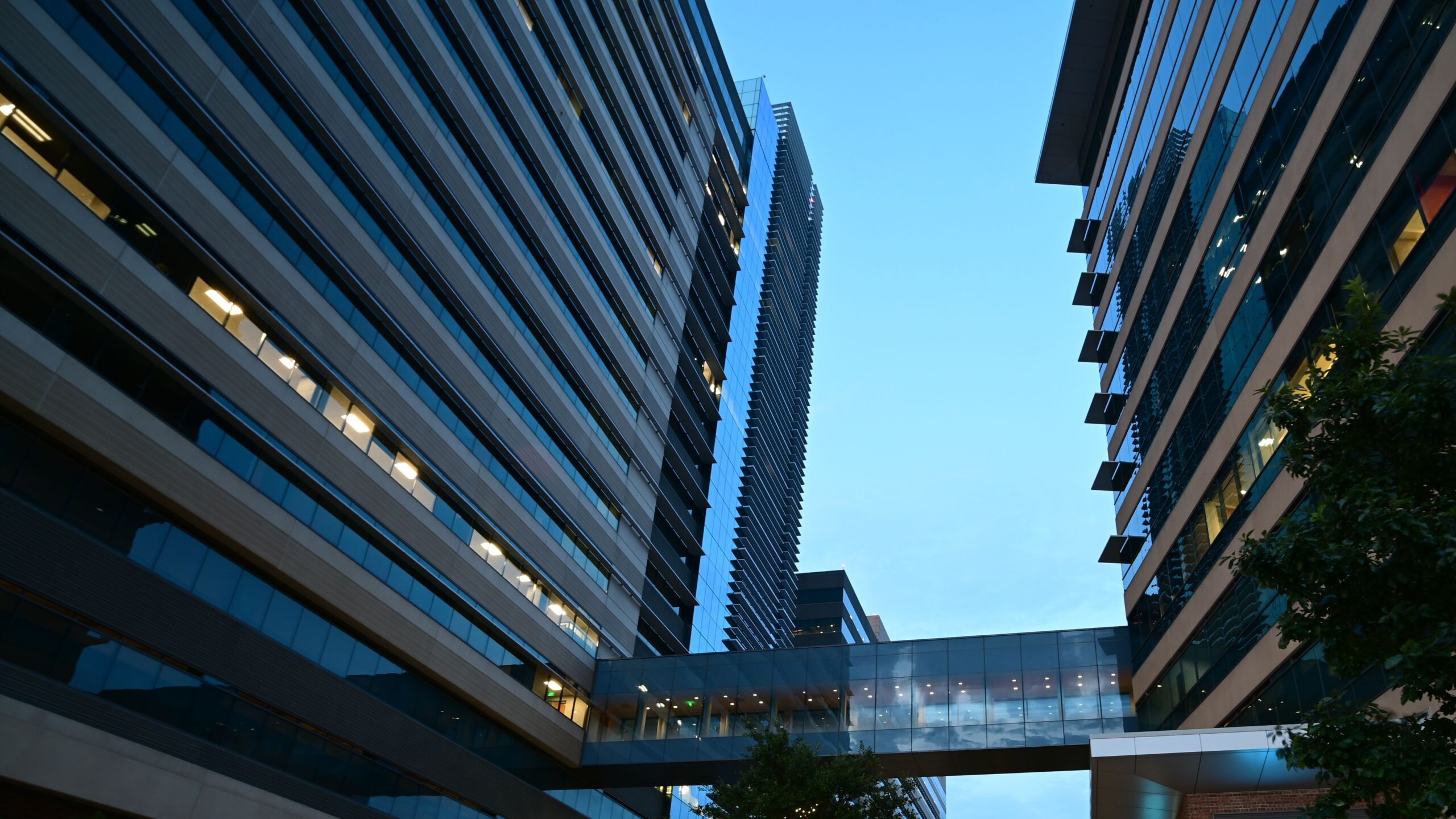Can empty office towers become housing? Survey says … Some of them

In response to the rise in remote work since the start of the COVID-19 pandemic, many companies have abandoned office space they previously occupied. Much ink has been spilled on the topic of empty office buildings in downtowns and office parks across the country.
Even casual observers of the housing crisis have started to wonder why those same office buildings are not being converted into homes. A new working paper from Arpit Gupta, Candy Martinez, and Stijn Van Nieuwerburgh considers the feasibility of converting underutilized, “brown” (polluting) office space into “green” apartments that are energy efficient and produce minimal emissions.
Key takeaways:
- The authors estimate that 11 percent of office buildings nationwide could be viable for conversion and could produce over 170,000 new apartments.
- Conversion is only financially feasible in the New York, San Francisco, Washington DC, Boston, Denver, and San Jose metro areas, where rents are high and office space is cheap.
- Local and federal governments have a role to play in making conversions feasible, such as by extending subsidies and loosening restrictions. The Inflation Reduction Act allocated funds that can be used to subsidize conversions to green apartments.
The authors focus on New York City, which recently passed a new tax on greenhouse gas emissions by the square foot. With this context, they analyze how existing, largely empty office buildings could be converted into green apartments to reduce emissions and better utilize space. The authors note that many office buildings constructed in the late 20th century are not well suited for conversion because their size and design result in there being areas in the interior of the building that are 50+ feet away from any window (as is displayed beautifully in this series of graphics from the New York Times.)
Gupta, Martinez, and Van Nieuwerburgh first estimate how many office buildings, based on their age, size, location, and vacancy rates, would be suitable for conversion. They find that 30 percent of office buildings in New York City and 11 percent of office buildings nationwide could be converted into green housing. If all were converted, it would be equivalent to a 1.5 million ton reduction in greenhouse gas emissions.
Using a pro forma model, the authors conclude that it can be financially feasible for a developer to purchase an office building and convert it to market-rate apartments. This is largely because office space is currently very cheap – if you assume that the valuation of an office building has fallen by 61 percent in recent years. Even so, conversions barely “pencil out.”
The authors also look at the financial feasibility of conversion in metro areas other than New York City, which is a somewhat unique case. Even assuming all apartments are market-rate, conversion is only possible in the New York, San Francisco, Washington DC, Boston, Denver, and San Jose metro areas. These are all places where rents are high enough to make conversion profitable. The authors estimate 358 buildings could be contenders for conversion in the San Francisco/Oakland area and 52 in the San Jose area.
The internal rate of return for a conversion project is small, and a developer’s potential for success would depend on their financials and the specific characteristics of each building. The authors estimate that it would not be financially feasible to include some guaranteed affordable units in the converted apartment building without a subsidy, such as tax abatement or a density bonus.
The Inflation Reduction Act (IRA) includes some provisions that could be applied to help fund conversions. It established the $27 billion Greenhouse Gas Emission Reduction Fund, which distributes grants to projects that reduce greenhouse gas emissions, but the funding is only available until 2024. Other opportunities created by the IRA include rebates and loans from HUD to fund energy saving renovation projects.
The authors also discuss policy reforms that cities could implement to make office-to-apartment conversions more feasible. These include modifying zoning and building codes, streamlining entitlements, granting extra density bonuses, eliminating parking requirements, and providing direct subsidies. Cities are incentivized to invest in office building conversions because they will provide greater tax revenues in the future than an empty building.
Turning empty office space into housing seems like a no-brainer to many. While conversion has its complexities and only some buildings are suitable candidates for conversion, Gupta, Martinez, and Van Nieuwerburgh lay out the important considerations and predict that conversion is possible for a large number of office buildings. Millions of underutilized square feet could soon become homes – but please get rid of the ceiling tiles first.
Photo of office towers by Bryan Dickerson on Unsplash.